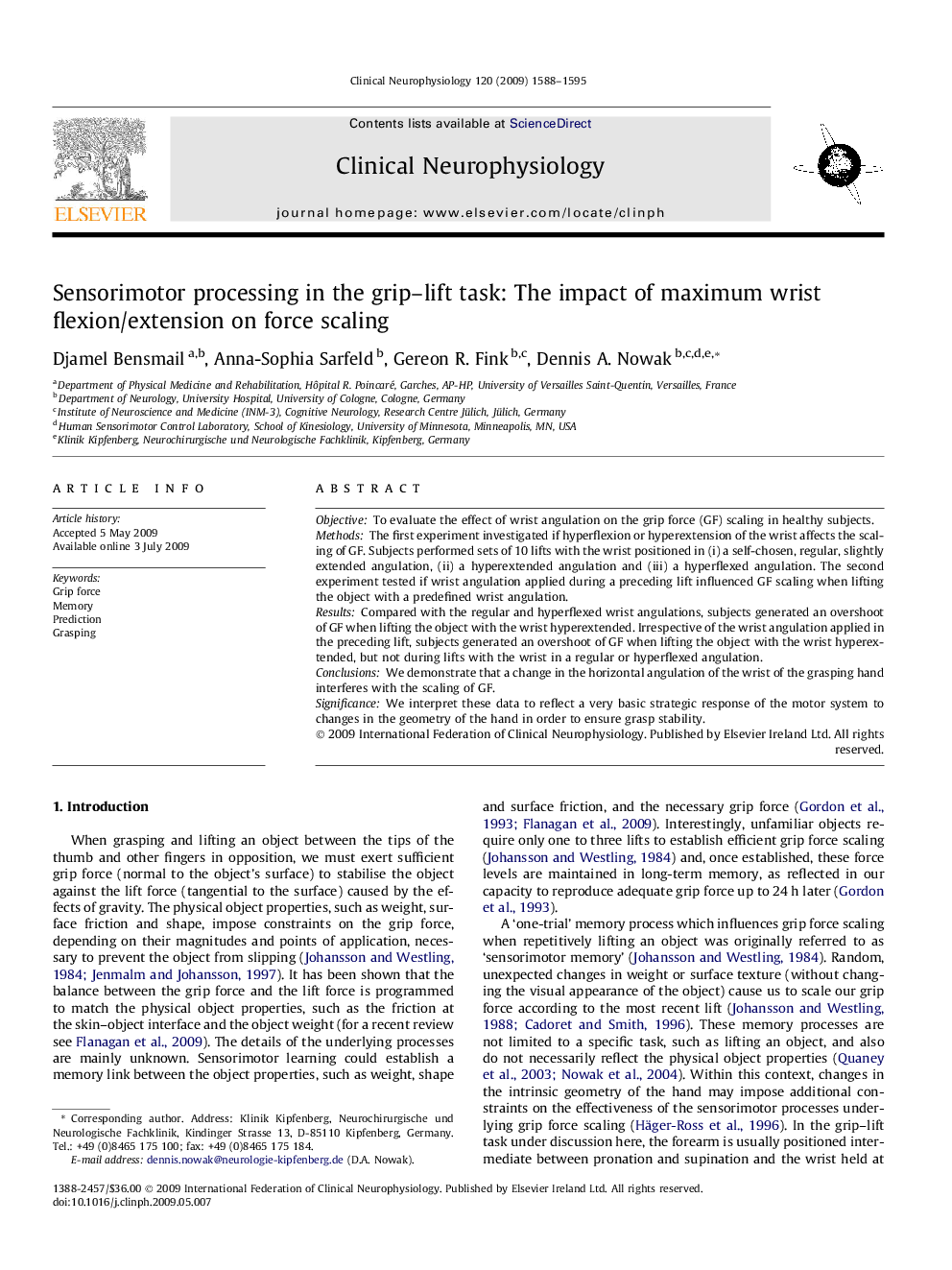| Article ID | Journal | Published Year | Pages | File Type |
|---|---|---|---|---|
| 3046288 | Clinical Neurophysiology | 2009 | 8 Pages |
ObjectiveTo evaluate the effect of wrist angulation on the grip force (GF) scaling in healthy subjects.MethodsThe first experiment investigated if hyperflexion or hyperextension of the wrist affects the scaling of GF. Subjects performed sets of 10 lifts with the wrist positioned in (i) a self-chosen, regular, slightly extended angulation, (ii) a hyperextended angulation and (iii) a hyperflexed angulation. The second experiment tested if wrist angulation applied during a preceding lift influenced GF scaling when lifting the object with a predefined wrist angulation.ResultsCompared with the regular and hyperflexed wrist angulations, subjects generated an overshoot of GF when lifting the object with the wrist hyperextended. Irrespective of the wrist angulation applied in the preceding lift, subjects generated an overshoot of GF when lifting the object with the wrist hyperextended, but not during lifts with the wrist in a regular or hyperflexed angulation.ConclusionsWe demonstrate that a change in the horizontal angulation of the wrist of the grasping hand interferes with the scaling of GF.SignificanceWe interpret these data to reflect a very basic strategic response of the motor system to changes in the geometry of the hand in order to ensure grasp stability.
